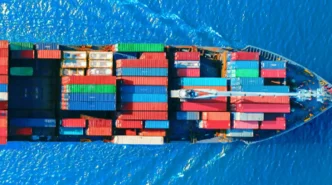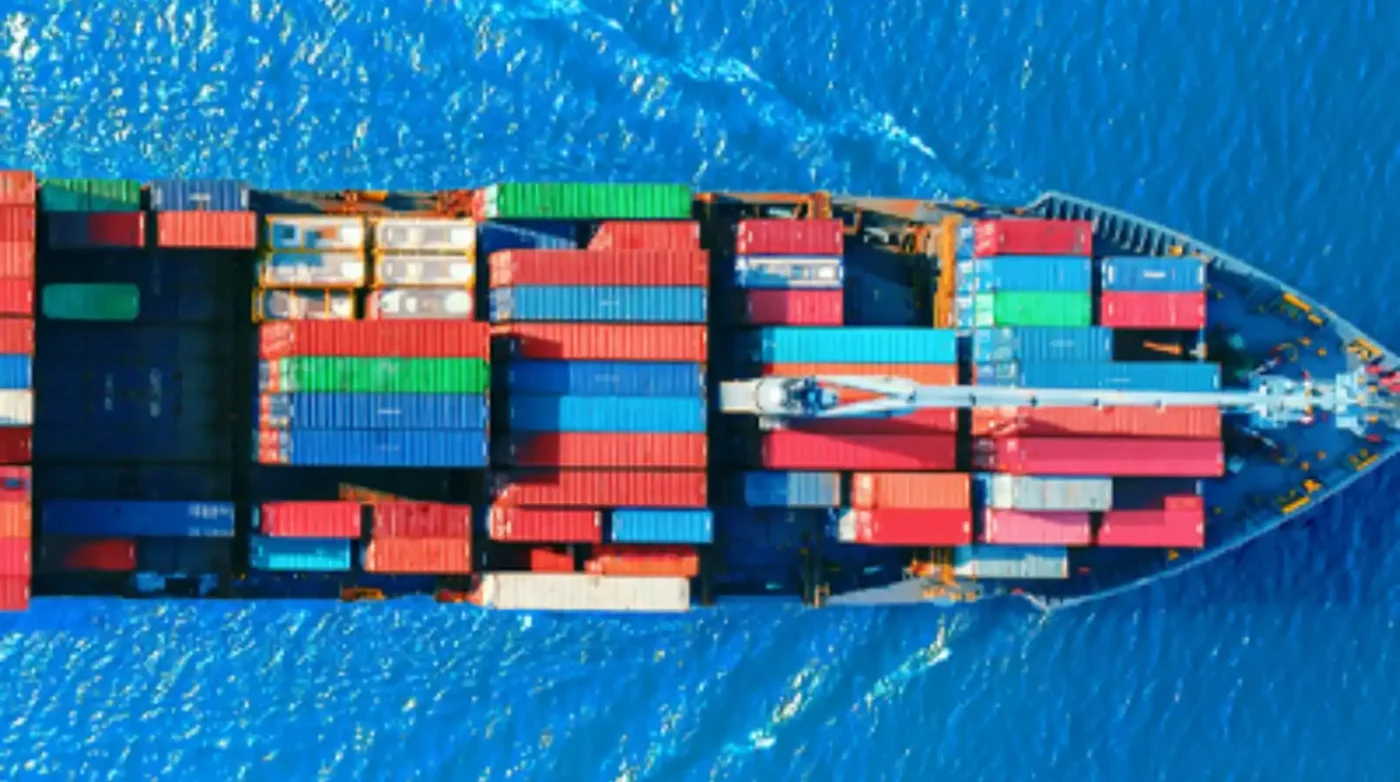Indonesia’s trade surplus has plummeted to its lowest level in five years, recording a mere US$158 million in April 2025, according to Statistics Indonesia (BPS). The dramatic decline from March’s US$4.33 billion surplus has raised alarms about the impact of escalating global trade tensions, particularly US-imposed tariffs on Indonesian goods. As the world’s largest economy flexes its protectionist muscle, questions loom over how Southeast Asia’s largest economy will navigate these choppy waters.
Sharp Decline Driven by Import Surge
The BPS data, released on June 3, 2025, paints a stark picture of Indonesia’s trade landscape. While exports grew by 5.76 percent year-on-year to US$20.74 billion in April, imports surged by a staggering 21.84 percent to US$20.59 billion over the same period. This imbalance marks the lowest trade surplus since April 2020, when the country recorded a deficit of US$350 million. Notably, Indonesia has maintained a monthly trade surplus for 60 consecutive months until this recent dip, a streak that now appears under threat.
Pudji Ismartini, a BPS official, underscored the severity of the drop during a press conference in Jakarta, describing April’s figure as “the lowest” surplus in half a decade. Unlike previous downturns, which were often tied to faltering exports, the current narrowing surplus stems primarily from a sharp rise in imports. This suggests deeper structural shifts in Indonesia’s trade dynamics, influenced by both domestic and international factors.
US Tariffs Cast a Long Shadow
A key driver of Indonesia’s trade woes appears to be the aggressive trade policies emanating from Washington. In early 2025, US President Donald Trump imposed a sweeping 10 percent tariff on nearly all imports, followed by country-specific levies under a “reciprocal” framework. Indonesian goods faced a particularly steep 32 percent tariff, though enforcement was temporarily paused. The US has since leveraged the threat of reinstatement to push trading partners, including Indonesia, to address its own trade deficits.
The impact on bilateral trade is evident. Indonesia’s exports to the US fell by 21 percent to US$2.08 billion in April from US$2.6 billion in March, while imports from the US rose by 19.28 percent to US$0.77 billion. Consequently, Indonesia’s trade surplus with the US shrank to US$1.31 billion in April, down from US$1.98 billion the previous month. These figures exclude oil and gas, sectors where the US remains a net exporter to Indonesia.
Economists point to the US tariffs as a catalyst for the trade imbalance. Hosianna Evalita Situmorang, an economist at Bank Danamon, noted in a recent analysis that the import surge reflects “pre-emptive restocking amid rising trade risks.” Manufacturers and businesses, wary of potential disruptions from further tariff hikes, appear to be stockpiling goods. Situmorang also warned of additional headwinds, including a proposed 50 percent US tariff on steel set for June 4, the end of the reciprocal tariff pause on July 9, and a projected 12 percent drop in global commodity prices.
Root Cause Analysis of Indonesia’s Trade Surplus Decline
But is it the imposition of global trade tarrifs by President Trump, or is something larger at play? Based on the analysis of publicly available sources, the following factors contributed towards Indonesia’s trade surplus shrinking to $160 million in April 2025, the lowest in five years:
- Surge in Imports:
- Capital Goods and Raw Materials: Imports, particularly of machinery, raw materials, and capital goods, surged by 21.8% year-on-year in April 2025. This reflects increased domestic investment and economic activity, boosting demand for imported goods.
- Domestic Rebound: Indonesia’s economic recovery has driven higher import volumes, as businesses and industries ramp up operations, requiring more raw materials and equipment.
- Falling Global Commodity Prices:
- Indonesia’s exports, heavily reliant on commodities like palm oil, coal, and metals, have been hit by declining global commodity prices. This reduces export revenues, narrowing the trade surplus.
- Sluggish demand from key markets, particularly China, has further weakened export performance.
- U.S. Tariff Pressures:
- Impact of Trump’s Policies: Since Donald Trump’s return to office (January 2025), proposed or implemented U.S. tariffs have created uncertainty. These tariffs may target Indonesian exports like palm oil and automotive products, potentially reducing export growth by 0.3–0.5%.
- Currency Pressure: U.S. tariffs contribute to a weaker Indonesian rupiah (16,970 IDR/USD), increasing import costs and exacerbating inflation risks, which indirectly affects trade dynamics.
- Global Tariff Fears: Speculation about broader tariff policies has led to preemptive import surges from countries like China, as businesses stock up to avoid future costs.
- External Demand Weakness:
- Slowing demand from major trading partners, especially China, has reduced Indonesia’s export revenues. This is compounded by global economic uncertainties, affecting commodity-driven economies like Indonesia.
- Historical Context:
- The trade surplus of $160 million in April 2025 is the lowest since April 2020, indicating a sharp decline from March 2025’s $4.3 billion surplus.
- Despite exports rising 5.8% year-on-year (matching forecasts), the rapid import growth outpaced export gains, significantly narrowing the surplus.
Chart: Indonesia’s Trade Surplus from January to April 2025, showing impact of U.S. tariff pressures
Gold as a Safe Haven Amid Uncertainty
Delving deeper into the import spike, Josua Pardede, chief economist at Bank Permata, highlighted a remarkable 253.6 percent year-on-year increase in gold imports during the January-to-April period. Speaking to The Jakarta Post, Pardede suggested that this surge reflects a flight to safety by domestic actors, including institutional investors and individuals. “This phenomenon indicates an accumulation of gold as a safe haven asset amid increasing global uncertainty due to the reciprocal tariffs” he said.
Pardede also noted a 10.77 percent month-on-month contraction in Indonesia’s exports in April compared to March, signaling caution in global markets and weakening demand. “This situation shows that even though growth in Indonesia’s trade volume remained positive annually, external pressures, particularly regarding reciprocal tariffs and their impacts on the global flow of goods and on commodity prices, have started to grind down the national monthly trade surplus” he added.
The rush to secure gold and other safe assets underscores the broader anxiety permeating Indonesia’s economy. With global trade rules in flux, domestic stakeholders are bracing for prolonged uncertainty, which could further erode trade gains if protectionist measures intensify.
Domestic Demand or Strategic Stockpiling?
Not all analyses attribute the import surge solely to external pressures. The macro strategy team at SSI Research suggested that the sharp increase in imports may also signal a rebound in domestic demand and industrial activity. In a report issued on June 3, the team argued that the influx of capital and consumer goods often precedes heightened industrial output and household consumption, offering a potential silver lining to the narrowing surplus.
They further posited that manufacturers might be stockpiling intermediate and capital goods in anticipation of shipping disruptions ahead of the US tariff implementation in July. This strategic hoarding, while inflating import figures in the short term, could position Indonesia’s industrial sector for resilience if global supply chains face further strain. However, this optimism is tempered by the reality of a shrinking surplus, which limits fiscal maneuverability for the government in addressing trade shocks.
Broader Implications for Indonesia’s Economy
Indonesia’s trade performance is a critical barometer of its economic health, given the country’s reliance on exports of commodities like palm oil, coal, and manufactured goods. A sustained reduction in the trade surplus could pressure the rupiah, which has already faced volatility amid global uncertainty. As of June 3, 2025, the exchange rate stood at approximately 16,000 Indonesian Rupiah to the US dollar, with potential for further depreciation if trade tensions escalate.
Moreover, the import surge raises questions about the balance between domestic consumption and export-driven growth. While increased imports of capital goods could bode well for long-term industrial capacity, the immediate fiscal impact of a diminished surplus may constrain public spending on infrastructure and social programs—key pillars of President Joko Widodo’s economic legacy as his administration nears its end.
The US tariff policy also threatens to disrupt Indonesia’s integration into global value chains. With exports to the US constituting a significant portion of outbound trade, any prolonged imposition of high tariffs could force Indonesian firms to seek alternative markets, a process that entails both time and cost. Neighboring countries like Vietnam and Malaysia, which have also faced US trade scrutiny, may compete for the same alternative markets, intensifying regional economic rivalry.
Global Trade Tensions and the Road Ahead
The broader context of global protectionism adds another layer of complexity to Indonesia’s trade challenges. The US is not alone in tightening trade policies; other major economies are reevaluating their import frameworks in response to domestic political pressures. For Indonesia, which has historically benefited from open markets, this shift poses a fundamental challenge to its export-oriented growth model.
Looking ahead, the scheduled end of the US reciprocal tariff pause on July 9 looms large. If the 32 percent levy on Indonesian goods is reinstated, the trade surplus could narrow further, potentially tipping the balance into a deficit. Additionally, the proposed steel tariff, set to take effect on June 4, could disproportionately affect Indonesia’s industrial exports, given the sector’s prominence in bilateral trade.
Domestically, policymakers face a delicate balancing act. Stimulating export growth through subsidies or trade agreements with non-US partners could mitigate some losses, but such measures require time and diplomatic capital. Meanwhile, curbing imports to restore the surplus risks stifling industrial activity, particularly if businesses rely on foreign inputs for production.
A Test of Resilience
Indonesia’s trade surplus crisis is more than a statistical anomaly; it is a litmus test for the country’s economic resilience in an era of global upheaval. As US tariffs and protectionist policies reshape trade flows, Jakarta must navigate a path that safeguards both immediate fiscal stability and long-term growth prospects. The import surge, while partly a defensive maneuver, hints at underlying domestic strengths that could be harnessed with the right policies.
For now, the mood among economists and policymakers remains cautious. With further tariff deadlines approaching and global commodity prices projected to decline, Indonesia’s trade outlook hangs in the balance. How the archipelago adapts to these pressures will likely define its economic trajectory for years to come, as stakeholders watch anxiously for signs of recovery or further strain.
As the situation unfolds, one question lingers: can Indonesia turn the tide against mounting external challenges, or will the trade surplus continue to dwindle under the weight of global protectionism?
















